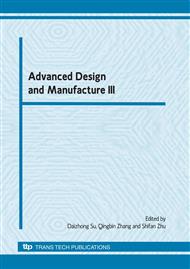p.304
p.308
p.312
p.316
p.320
p.325
p.329
p.333
p.337
Towards Cooperative Robotic Swarm Recognition: Object Classification and Validity
Abstract:
Currently in cooperative transport research each agent can identify object validity. The validity is identified through a distinguishing feature, such as the object being lit. This paper examines the scenario where individual agents cannot assess the validity of an object. For example a triangle and hexagon may appear the same to an agent looking at a small section of the object. An arena containing half valid and half invalid objects was designed and implemented using a swarm simulation hexagonal grid test bed. The objects appear identical to an individual agent but are dissimilar, the objects were represented as imprecise triangles and hexagons. The swarm assessed each object as a group to determine its validity. Two different strategies were compared for dealing with invalid objects ranging the number of agents from 10 to 30. Initial testing has concluded that by ignoring invalid objects once identified required, on average, 1.28 times the amount of energy consumption to complete the task than when the invalid objects were removed.
Info:
Periodical:
Pages:
320-324
Citation:
Online since:
November 2010
Authors:
Price:
Сopyright:
© 2011 Trans Tech Publications Ltd. All Rights Reserved
Share:
Citation:


